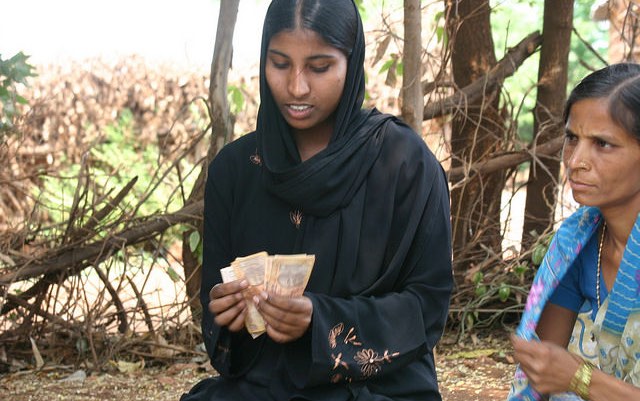Many households in developing countries lack access to credit because they have no cash or property assets to serve as collateral. This can severely limit their life opportunities, preventing them from investing in their farms or other businesses, and also reduces their resilience to economic shocks.
Group lending through microfinance programs has become a popular practice in many developing countries to address this issue. Instead of attempting to borrow individually, people organize into self-help groups that collectively take out loans; all group members are responsible for paying them back. This arrangement allows financial institutions to rely on information advantages among group members, rather than on financial collateral, to mitigate information asymmetries between lenders and borrowers.
While generally effective, group lending encounters a basic problem of any loan program—some participants end up not paying the money back. How can group lending programs effectively collect repayments while still serving poor borrowers? Specifically, it can be difficult for lenders to determine which groups pose a risk of default and which do not.
Many factors determine a group’s loan repayment performance. These include members’ socio-economic characteristics (e.g., income, occupation, literacy, etc.), but also more intangible factors such as entrepreneurial spirit, trust among group members, and the level of peer monitoring and enforcement. These latter factors are important for the fate of loan repayments, yet cannot be readily observed or quantified.
A 2018 paper published in Economic Inquiry by IFPRI researchers Manuel A. Hernandez and Yanyan Liu, and collaborator Li Gan of Texas A&M University, proposes a new model to examine these unobservable individual and group characteristics and their role in group repayment behavior. It is designed to aid lenders in identifying more and less risky borrowing groups.
The IFPRI team utilizes a dataset of 1,110 group loans allocated to 12,833 members in Andhra Pradesh, India. The loans followed a recent self-help group model program in the region, promoted by the World Bank, that combined savings generation and microlending with social mobilization. In 76 percent of the groups examined, all group members fully repaid their loans; in 17 percent of the groups, all group members defaulted or did not fully repay their loans.
The study uses a finite mixture structure to model group members’ repayment behavior in the presence of unobserved group heterogeneity. In the model, certain average characteristics of members, and of groups and villages, help to identify two distinct group types: Those more inclined to fulfill their repayment obligations (“responsible” groups) and those that are more inclined to default on their loans (“irresponsible” groups).
The model’s two group types summarize all unobserved individual and group characteristics; individuals in a given group will make repayment decisions based on their unobserved group type, in addition to their observable individual and loan characteristics. The group type classification thus offers lenders new insights they could not glean from data on observable factors alone.
The model allows banks to link observable characteristics with the unobserved group types and to more effectively screen clients for future loans. “Responsible” groups, for instance, tend to hold more frequent meetings and have greater access to village services such as telephones and financial institutions.
The researchers also found that loan characteristics—such as high-frequency repayment schedules, shorter terms, and larger group size—are more important indicators of success for “irresponsible” groups than for “responsible” groups. Accounting for these differences can help lenders reduce transaction costs by offering contracts tailored to a predicted group type.
Overall, the proposed model appears to be more effective in identifying potential defaulters than standard probabilistic models that do not control for unobserved, intangible factors such as social cohesion and peer monitoring and enforcement. Such a model can help financial institutions better screen potentially risky groups from safe ones, and better manage the risk associated with group lending programs—ultimately making microfinance a more effective development tool.
Manuel A. Hernandez and Yanyan Liu are Senior Research Fellows with IFPRI’s Markets, Trade, and Institutions Division (MTID). Sara Gustafson is an MTID Communications Specialist.







